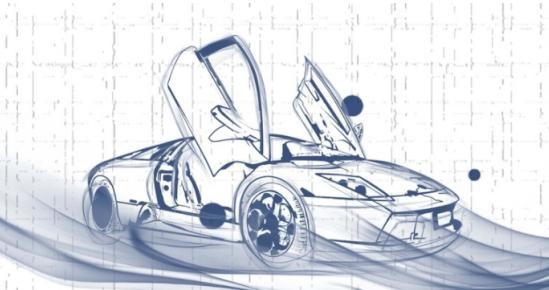Guide: Rolls-Royce, Lamborghini and other sports car companies announced that they will develop research and development around high-energy storage technologies such as supercapacitors for new models. Thanks to the current development of electrochemical basic materials science, supercapacitors will also have a certain high energy density while maintaining the original high power density characteristics, thus providing strong power and acceleration for the car.

In the last two years, top sports car manufacturing companies have frequently released research and development news on new concept models based on supercapacitor energy storage. Rolls-Royce has signed a cooperation agreement with British technology companies to explore the potential of using new hydrophilic polymers to develop a new generation of high-energy storage technologies. The latter patented the new polymer super-dielectrics discovered in the study and is working to commercialize it for supercapacitor electrolyte materials and electrical energy storage. Lamborghini announced that it would work with MIT to develop a new supercar that would be powered by supercapacitors, which is different from conventional batteries.
Analysts pointed out that the top sports car company has never been concerned about the research and development of energy storage devices such as super capacitors, and the heat even surpasses the trend of traditional batteries. Although the Tesla CEO's assertion that lithium battery will be too high, super capacitor is king - too radical, but it also reflects the super capacitor in the global passenger car application is optimistic.
Prior to this, the main commercial application of supercapacitors in passenger cars was hybrid braking energy recovery, such as Mazda Artz's use of the i-Eloop braking energy recovery system based on supercapacitor energy storage to slow down the vehicle. The generated kinetic energy is converted into electricity for use in air conditioners, stereos, and other in-vehicle electrical equipment, reducing fuel consumption during actual driving with frequent acceleration and braking. The technology is derived from the Toyota Le Mans LMP1 car, which uses "supercapacitor" to quickly charge and recharge the power, long-term repeated use and not easy to age energy storage characteristics. In the modification market, supercapacitors are often used in car audio, and certain compensation is performed when the starting or vehicle voltage fluctuates, so that the speaker is not affected.
In recent years, supercapacitors have been frequently concerned by super sports car companies; they are related to the high power discharge characteristics inherent in supercapacitors, and are also related to the development of new electrochemical materials. The synergy between the two makes high energy density and high power density. The commercialization of supercapacitors has certain theoretical possibilities.
(1) High power density. The internal resistance of the supercapacitor is very small, and the charge storage can be quickly stored and released in the electrode/solution interface and the electrode material body, so that its output power is up to several KW/kg, which is unmatched by any chemical power source. Tens of times the battery is generally used.
(2) Breakthrough in capacitive material technology. The successful development and application of new graphene materials, carbon nanostructured composite electrode materials, and various high-performance materials such as new water/organic electrolytes can not only maintain the fast charge and discharge advantages of supercapacitors, but also increase the storage capacity.
During the period, the supercapacitor company's own transformation and innovation is also indispensable: foreign supercapacitor companies develop supercapacitor batteries for automotive use, and superpower leader Jixing Technology also has initial intentional communication with a domestic brand passenger car. The research model provides energy storage support. In this way, will high energy capacitors be far behind?